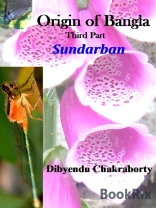Sundarban Forest, presently called ‘Sundarbans National Park’ in India, is a mangrove forest spanning the eastern coastal deltaic areas of West Bengal and the western coastal deltaic areas of Bangladesh. UNESCO has declared it a World Heritage Site.
It is mentioned almost universally that the presence of ‘Sundari’ trees gave rise to the word ‘Sundarban’. A small question arises in the mind. If the Sundari tree is at the root of the name, then wouldn’t the name have been Sundariban instead of Sundarban? Why had the name been changed to Sundarban?
There is no apparent explanation for dropping the very important and gender-sensitive ‘i’ from the name. The exclusion of the letter ‘i’ makes the word go from a feminine one to a masculine one. Generally, prehistoric names don’t change their names under the influence of the corrupted pronunciation practices of the commoners. Even if it is done, traces of the original names remain available from one source or the other. Nowhere has it been told that the name of this forest was ‘Sundariban’ in the distant past ever. Always it remained ‘Sundarban’. In that case, there must be a source for this name that is independent of the word ‘Sundari’.
Naru, a Bengali by birth, has applied his acquired knowledge to find a logically consistent explanation of the name Sundarban. This book tries to provide the derivation of the name independent of the ‘Sundari’ tree.












